 2025-12-15
2025-12-15
(From Left) Professor Keon Jae Lee, Professor Tae-Hyuk Kwon, Ph.D candidate Min Seo Kim, Dr. Jae Hee Lee, Dr. Chae Gyu Lee
Conventional pancreatic cancer treatments face a critical hurdle due to the dense tumor microenvironment (TME). This biological barrier surrounds the tumor, severely limiting the infiltration of chemotherapy agents and immune cells. While photodynamic therapy (PDT) offers a promising alternative, existing external light sources, such as lasers, fail to penetrate deep tissues effectively and pose risks of thermal damage and inflammation...
Continue reading →
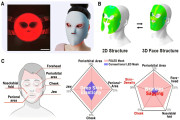 2024-10-30
2024-10-30
Figure 1. Overall concept of face-fit surface-lighting micro-LEDs (FSLED) mask. a. Optical image of the FSLED mask showing uniform surface-lighting. schematic illustration of the FSLED mask. The 2D to 3D transformation procedure b. Difference in cosmetic effect on deep skin elasticity, wrinkles, and sagging between FSLED mask and CLED mask. (improvement percentage in eight weeks). Credit: Advanced Materials (2024). DOI: 10.1002/adma.202411651 Conventional LED masks, with their rigid design, fail to conform closely to the skin's contours. T...
Continue reading →
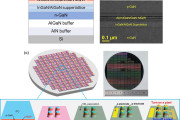 2024-08-01
2024-08-01
Researchers based in Korea report on size-dependent characteristics of indium gallium nitride (InGaN) red micro-scale light-emitting diodes (micro-LEDs) fabricated on 4-inch silicon (Si) substrates [Juhyuk Park et al, Optics Express, v32, p24242, 2024].
The team from Korea Advanced Institute of Science and Technology (KAIST), Korea Advanced Nano Fab Center (KANC), and Chungbuk National University, sees its work as being pioneering, adding: “This work is the first investigation into the size-dependent characteristics of InGaN/GaN red micro-L...
Continue reading →
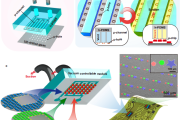 2023-12-21
2023-12-21
- A KAIST research team led by Professor Keon Jae Lee demonstrates the transfer printing of a large number of micro-sized inorganic semiconductor chips via the selective modulation of micro-vacuum force.
MicroLEDs are a light source for next-generation displays that utilize inorganic LED chips with a size of less than 100 μm. MicroLEDs have attracted a great deal of attention due to their superior electrical/optical properties, reliability, and stability compared to conventional displays such as LCD, OLED, and QD. To commercialize microLEDs, transfer ...
Continue reading →
 2023-03-30
2023-03-30
Some reports suggest that Samsung could soon receive the key for manufacturing highly efficient MicroLED screens. Some researchers at KAIST (Korea Advanced Institute of Science & Technology) have discovered a new method that entitles modifying the epitaxial structure of MicroLEDs.
When it comes to manufacturing highly-efficient MicroLED screens, one of the biggest problems is efficiency degradation. In other words, we can say that the etching process has the potential to create defects on the pixel sides. There is an inverse relation between pixels and d...
Continue reading →
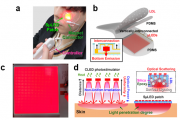 2022-11-24
2022-11-24
A KAIST research team led by Ph.d candidate Jae Hee Lee and Professor Keon Jae Lee from the Department of Materials Science and Engineering has developed a surface-lighting microLED patch for UV-induced melanogenesis inhibition.
Melanin is brown or dark pigments existing in the skin, which can be abnormally synthesized by external UV or stress. Since the excessive melanin leads to skin diseases such as spots and freckles, proper treatment is required to return normal skin condition.
Recently, LED-based photo-stimulators have been rele...
Continue reading →
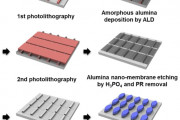 2020-05-11
2020-05-11
A research team at Seoul National University (SNU) successfully grew a Micro LED array on a 100 nm-thick sapphire nano-membrane. The results were published on Scientific Reports on May 5, 2020.
According to the published paper, the team, led by Euijoon Yoon of the Department of Materials Science and Engineering of SNU, designed the sapphire nano-membrane array to grow an array of multi-faced Micro LEDs sized 4 μm × 16 μm. With the method, the Micro LED chip singulation does not need to go through plasma etching process, leading to a better ext...
Continue reading →
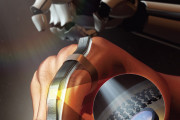 2020-04-10
2020-04-10
A KAIST team developed a novel wearable strain sensor based on the modulation of optical transmittance of a carbon nanotube (CNT)-embedded elastomer. The sensor is capable of sensitive, stable, and continuous measurement of physical signals and shows potential for the detection of subtle human motions and the real-time monitoring of body postures for healthcare applications.
The study “Wearable Strain sensors Using Light Transmittance Change of Carbon Nanotube-Embedded Elastomers with Microcracks” was published in Applied Materials & Interfaces in ...
Continue reading →
 2020-01-10
2020-01-10
The Korea Advanced Institute of Science and Technology (KAIST) has developed a new technology which overcomes the bottleneck of Micro LED display resolution, reported Business Korea. The new technology will support the production of small size Micro LED displays with high resolution targeting AR and VR applications.
In January 6, KAIST announced that Professor Kim Sang-hyun and his research team of the Department of Electrical and Electronic Engineering have developed a Micro LED display with a resolution of 63,500 pixel per inch (ppi) with semi...
Continue reading →
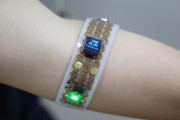 2019-12-04
2019-12-04
KAIST research team has invented “transformative electronics systems” which can change shapes and stretch flexibly, enabling novel design for wearable products. The new study was published in Science Advance in November.
According to KAIST, the transformative electronics consist of a special gallium metal structure, hermetically encapsulated and sealed within a soft silicone material, combined with electronics that are designed to be flexible and stretchable. The mechanical transformation of the electronic systems is specifically triggered by temperature change...
Continue reading →
 2019-10-23
2019-10-23
A research team of The Korea Advanced Institute of Science and Technology (KAIST) developed a new light-emitting material which combines quantum dot with a polymer medium filled with popcorn-like air bag. The new material, compared to conventional pure quantum dot films, perform 21 times better luminous intensity and 45% better durability. (Image: KAIST) The study was published online in September on Nano Letters, titles “Order-of-Magnitude, Broadband-Enhanced Light Emission from Quantum Dots Assembled in Multiscale Phase-Separated Block Copol...
Continue reading →
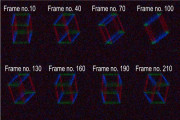 2019-04-22
2019-04-22
Researchers at The Korea Advanced Institute of Science and Technology (KAIST) have designed an ultrathin display that can project dynamic, multi-colored, 3D holographic images. The result of the study was published in Nature Communications. The system's critical component is a thin film of titanium filled with tiny holes that precisely correspond with each pixel in a liquid crystal display (LCD) panel. This film acts as a 'photon sieve' - each pinhole diffracts light emerging from them widely, resulting in a high-definition 3D image observable from a wide...
Continue reading →
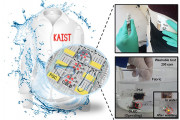 2019-03-27
2019-03-27
Wearable devices have become common electronics in the modern society and they have been integrated with various smart applications to enhance life convenience. Apart from wearable accessories like glasses and watches, scientists are working on developing smart clothing to create even more diverse applications.
The Korea Advanced Institute of Science and Technology (KAIST) announced its new achievement in developing a textile-based display module that is washable, wearable and self-powered.
(Image: KAIST)
Professor Kyung Cheol Choi from the School of Electri...
Continue reading →
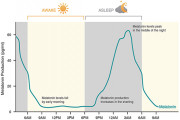 2019-03-07
2019-03-07
Do you have problem waking up in the morning? The right lighting can help people overcome morning drowsiness, according to a study by Korean research team.
Researchers from Korea Advanced Institute of Science and Technology (KAIST) suggested that a blue-enriched LED light can effectively boost morning alertness. This study further supports the concept of human centric lighting and provides the basis for major changes in future lighting strategies.
The 2017 Nobel Prize winning research unveiled the molecular mechanisms that control circadian rhythms. In the early 2...
Continue reading →
2019-02-01
Researchers at the Ulsan National Institute of Science and Technology (UNIST) and the Korea Advanced Institute of Science and Technology (KAIST) have achieved new technology developments including foldable flexible perovskite LEDs and a core chip for 3D image sensors respectively, reported BusinessKorea.
The research team at UNIST announced that it has developed foldable perovskite LEDs (PeLED) with a transparent material as electrode of the device. PeLED uses perovskite material as light emitting layer through electricity. In the study, resear...
Continue reading →
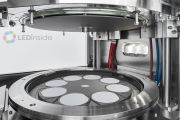 2018-12-21
2018-12-21
Having looked back at the industry updates of Micro LED technology, let’s keep on reviewing the technology breakthroughs of Micro LED in the past year.
KAIST Team Develops Flexible Vertical Micro LED to Cure Hair loss Problem
In January, a researcher team at KAIST announced the development of flexible vertical micro LEDs (f-VLEDs). These f-VLEDs achieved optical power density (30 mW/mm2) three times higher than that of lateral Micro LEDs and can be applied to optogenetics for controlling the behavior of neuron cells and brains with...
Continue reading →
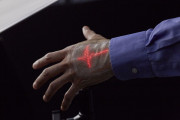 2018-11-26
2018-11-26
Combining LED technology and medical research, several integrations have been revealed, showing the potential of the technology in healthcare applications and development. LEDinside has collected some innovative examples of LED applications which create possibilities for future medical improvement. Elastic Micro LED skin sensor system In February 2018, a new ultrathin, elastic Micro LED display that fits snugly on the skin was developed by researchers at the University of Tokyo and Dai Nippon Printing (DNP) in an academic-industrial collaboration. The int...
Continue reading →
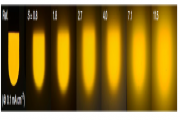 2018-10-29
2018-10-29
Researchers at KAIST have achieved high efficiency with OLED without using macroscopic lens. They used an external scattering medium to achieve an external quantum efficiency (EQE) of more than 50 percent in OLED stimulation. The research, led by Professor Seunghyup Yoo and PhD candidate Jinouk Song, was published in Nature Communications on August 10th, 2018.
Continue reading →
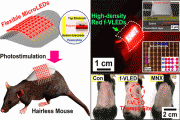 2018-09-13
2018-09-13
Regrowing hair for mice is the new application unveiled by researchers from the Korea Advanced Institute of Science and Technology (KAIST) with their red flexible vertical Micro LED technology. They published their result in ACS Nano in August.
Continue reading →
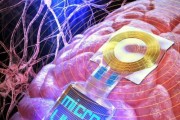 2018-06-21
2018-06-21
Researchers from KAIST published their research on developing a one-step method to transfer thousands of thin-film blue vertical micro LEDs (thickness < 2 μm) on a transparent plastic substrate.
Continue reading →
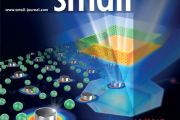 2018-01-30
2018-01-30
KAIST researchers have discovered a technology that enhances the efficiency of Quantum Dot LEDs.
Continue reading →
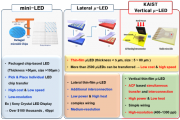 2018-01-30
2018-01-30
A KAIST research team led by Professor Keon Jae Lee from the Department of Materials Science and Engineering and Professor Daesoo Kim from the Department of Biological Sciences has developed flexible vertical micro LEDs (f-VLEDs) using anisotropic conductive film (ACF)-based transfer and interconnection technology. The team also succeeded in controlling animal behavior via optogenetic stimulation of the f-VLEDs.
Continue reading →
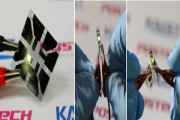 2016-06-04
2016-06-04
The arrival of a thin and lightweight computer that even rolls up like a piece of paper will not be in the far distant future. Flexible organic light-emitting diodes (OLEDs), built upon a plastic substrate, have received greater attention lately for their use in next-generation displays that can be bent or rolled while still operating.
Continue reading →
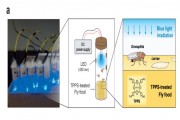 2015-11-13
2015-11-13
A Korean research team jointly led by Professor Chan Beum Park of the Materials Science and Engineering Department at KAIST and Dr. Kwon Yu from the Bionano Center at the Korea Research Institute of Bioscience and Biotechnology (KRIBB) conducted research to suppress an abnormal assembly of beta-amyloids, a protein commonly found in the brain, by using photo-excited porphyrins.
Continue reading →
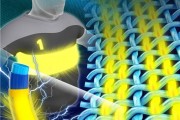 2015-08-17
2015-08-17
Professor Kyung-Cheol Choi and his research team from the School of Electrical Engineering at KAIST have developed fiber-like LEDs, which can be applied in wearable displays. The research findings were published online in the July 14th issue of Advanced Electronic Materials.
Continue reading →
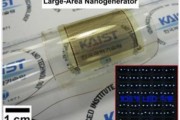 2014-05-16
2014-05-16
The energy efficiency of The Korea Advanced Institute of Science and Technology (KAIST) piezoelectric nanogenerator has increased by almost 40 times, one step closer toward the commercialization of flexible energy harvesters that can supply power infinitely to wearable, implantable electronic devices.
Continue reading →
 2025-12-15
2025-12-15
 2024-10-30
2024-10-30
 2024-08-01
2024-08-01
 2023-12-21
2023-12-21
 2022-11-24
2022-11-24
 2020-05-11
2020-05-11
 2020-04-10
2020-04-10
 2020-01-10
2020-01-10
 2019-12-04
2019-12-04
 2019-10-23
2019-10-23
 2019-04-22
2019-04-22
 2019-03-27
2019-03-27
 2019-03-07
2019-03-07
 2018-12-21
2018-12-21
 2018-11-26
2018-11-26
 2018-10-29
2018-10-29
 2018-09-13
2018-09-13
 2018-06-21
2018-06-21
 2018-01-30
2018-01-30
 2018-01-30
2018-01-30
 2016-06-04
2016-06-04
 2015-11-13
2015-11-13
 2015-08-17
2015-08-17
 2014-05-16
2014-05-16